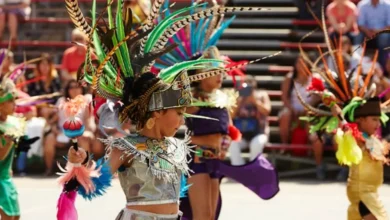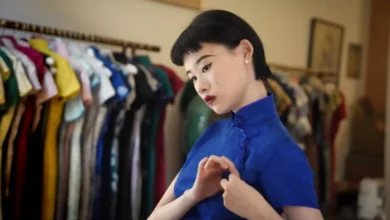Greece, a land steeped in history and mythology, boasts a rich tapestry of traditions woven into its cultural and religious festivals. Central to these celebrations are the vibrant and symbolic traditional Greek costumes.
These aren’t just pieces of fabric; they’re tangible expressions of heritage, identity, and spirituality, each stitch telling a story of generations past. This article will explore the fascinating world of Greek folk attire and how it illuminates the essence of these cherished occasions.
The Significance of Traditional Greek Dress
Before diving into specifics, it’s crucial to understand the importance of traditional Greek costumes. These garments are more than just decorative clothing; they are:

- Symbols of Identity: Each region in Greece has its own distinctive style, reflecting local history, customs, and climate. The costumes serve as a visual marker of belonging.
- Historical Records: Many traditional costumes have evolved over centuries, preserving elements from different eras and cultural influences. Examining these clothes is like reading a history book written in fabric.
- Expressions of Community: Wearing traditional attire during festivals fosters a sense of unity and shared heritage. It reminds participants of their common roots and strengthens communal bonds.
- Reflections of Social Status: In the past, specific garments indicated a person’s social standing, marital status, and profession. While this is less prominent today, traces of this system remain in some festival costumes.
- Vehicles of Religious and Spiritual Expression: Certain costumes are directly associated with religious rituals, conveying reverence and devotion.
Let’s delve into specific types of garments and how they manifest in festivals.
See also The Soul of the Parka: Traditional Inuit Garments and Arctic Spirituality
The Soul of the Parka: Traditional Inuit Garments and Arctic Spirituality
Common Elements Across Greek Folk Attire
Despite regional variations, several common threads weave through traditional Greek costumes. You’ll often find:
- Fabrics: Natural materials like wool, linen, and cotton were historically used. Richer fabrics like silk or velvet were often reserved for special occasions.
- Colors: Bold and vibrant colors such as red, blue, black, and gold are common, each carrying symbolic meanings. Red, for example, often symbolizes joy and celebration.
- Embroidery: Intricate embroidery is a hallmark of many costumes, featuring patterns inspired by nature, mythology, and religious symbols. These designs were often passed down through generations.
- Accessories: Accessories such as belts, aprons, headscarves, jewelry, and shoes are an essential part of the ensemble, each contributing to the overall look and meaning.
Understanding these commonalities provides context for exploring the diverse regional styles.
Regional Variations: A Kaleidoscope of Styles
Greece’s diverse geography and history have given rise to a fascinating array of regional costume styles. Here are a few prominent examples:
The “Foustanella”: The National Costume

Perhaps the most recognizable traditional Greek costume is the “Foustanella“. This men’s skirt-like garment, typically made of white cotton or linen, is associated with the Evzones, the Presidential Guard of Greece.
See also Traditional Sarees Worn in Indian Wedding Rituals
Traditional Sarees Worn in Indian Wedding Rituals
It is characterized by its many pleats, which were originally designed to allow greater freedom of movement in combat. The Foustanella is often paired with a white shirt, a fermeli (embroidered vest), and tsarouchia (red leather clogs with pom-poms).
The Foustanella, while considered the national costume, has strong historical links to the mountainous regions of Greece and the Balkan peninsula, having been worn by fighters during the Greek War of Independence. Its presence in parades and celebrations reflects its symbolic power and connection to Greek history and national pride.
The Island Costumes: A Mediterranean Palette
The island regions of Greece showcase a diverse range of traditional Greek costumes, influenced by their unique history and geography. Coastal areas often feature lighter fabrics and vibrant colors to cope with the warm weather. Common elements include:

- Santorini: Known for its predominantly white costumes, often adorned with blue embroidery, reflecting the island’s iconic whitewashed houses and blue sea.
- Crete: Features men’s attire including *vraka* (loose-fitting trousers) and embroidered vests, often in dark colors. Women’s costumes are known for their elaborate embroidery and intricate headscarves.
- Cyclades: Show a range of styles depending on the specific island, but generally feature lighter, often cotton, fabrics and brighter colors, incorporating elements influenced by seafaring traditions.
These island costumes often incorporate headscarves (mandilia), aprons, and various belts, and each piece is a testament to the island’s distinct cultural identity.
Mainland Costumes: Mountainous and Earthy

Moving to the mainland, you’ll find costumes reflecting the more rugged terrain and historical influences of each region. Key examples include:
- The Peloponnese: Features a variety of costumes depending on the specific area, with elements of the Foustanella in the men’s attire and richly embroidered dresses and headscarves for women.
- Epirus: Known for its heavy wool fabrics, darker color palettes, and intricately woven textiles, reflecting its colder climate and historical ties to the mountains.
- Thrace: Distinct for its costumes incorporating colorful embroidery and geometric patterns, showcasing a blend of Balkan influences.
These mainland costumes demonstrate a remarkable diversity, highlighting the importance of regional identity within the broader Greek context.
Traditional Greek Costumes in Religious Festivals
Traditional Greek costumes play a vital role in various religious festivals throughout the year, adding an extra layer of meaning and visual splendor. Here are a few significant examples:
Easter Celebrations
During the most important festival in the Orthodox Christian calendar, Easter, traditional costumes may be worn, particularly during processions and celebrations. While not universal, specific regions may have customs where villagers wear local attire to church services or community events. White is a common color to denote purity and joy related to the Resurrection. The specific styles will align with the area’s normal traditional Greek costumes.
Panigiria: Local Saint’s Days

Each Greek Orthodox saint has their own feast day, known as a panigyri. These celebrations, usually centered around a church dedicated to the saint, often include the wearing of traditional Greek costumes. These are not specifically religious garments but rather the regional best attire for such an important communal event.
This demonstrates the overlap between faith and local cultural expression, as celebrating a religious occasion also means displaying local identity. Festivities include feasting, music, dancing, and of course, the colorful costumes add to the atmosphere.
Carnival Season (Apokries)
Before Lent, the Carnival season is a time for revelry and masked celebrations. While not specifically religious, it has strong links to traditions and customs. In some areas, people may wear variations of traditional Greek costumes for parties and parades, often adding theatrical or comical elements. Masks are a common accessory, allowing participants to temporarily step out of their everyday roles.
The 15th of August: Dormition of the Theotokos
The Dormition (Assumption) of the Virgin Mary is a very important day in the Greek Orthodox Church, and local communities celebrate it with *panigiria*, which are often held with the participation of people wearing their traditional Greek costumes. This day is a day of celebration, remembrance, and faith, which gives a very special context to the use of these traditional garments.
The Modern Preservation of Traditional Greek Costumes
In modern Greece, traditional Greek costumes aren’t relegated to museums or historical re-enactments. There is an ongoing effort to preserve and promote these cultural treasures. This effort includes:
- Cultural Organizations: Many local and national organizations work to preserve traditional craftsmanship, organize festivals, and educate the public about the history and significance of folk attire.
- Dance Groups: Folk dance groups are instrumental in keeping traditions alive, with dancers proudly wearing their regional costumes during performances, thus ensuring they remain relevant in today’s culture.
- Artisans: A number of skilled artisans and tailors continue to create traditional costumes, often using age-old techniques, thus protecting and passing down invaluable skills.
- Museums: Museums dedicated to folk art and traditions are essential for safeguarding and showcasing costumes to local people and tourists alike, which promotes knowledge and appreciation.
The revival and continuation of these traditions are a testament to the enduring power of cultural heritage.
Conclusion: Threads of Identity and Faith
Traditional Greek costumes are much more than mere articles of clothing; they represent the living history of Greece, reflecting the country’s cultural diversity, spiritual beliefs, and artistic prowess. From the iconic Foustanella to the vibrant attire of the islands, each costume tells a unique story.
By observing these garments during cultural and religious festivals, we glimpse the heart and soul of Greece, understanding its rich tapestry of traditions. These pieces connect the past to the present, weaving a rich narrative of identity, community, and unwavering faith.
As Greece continues to evolve, it is crucial to value and protect these traditional Greek costumes, ensuring that they remain a vibrant and integral part of its cultural heritage for generations to come.“`



